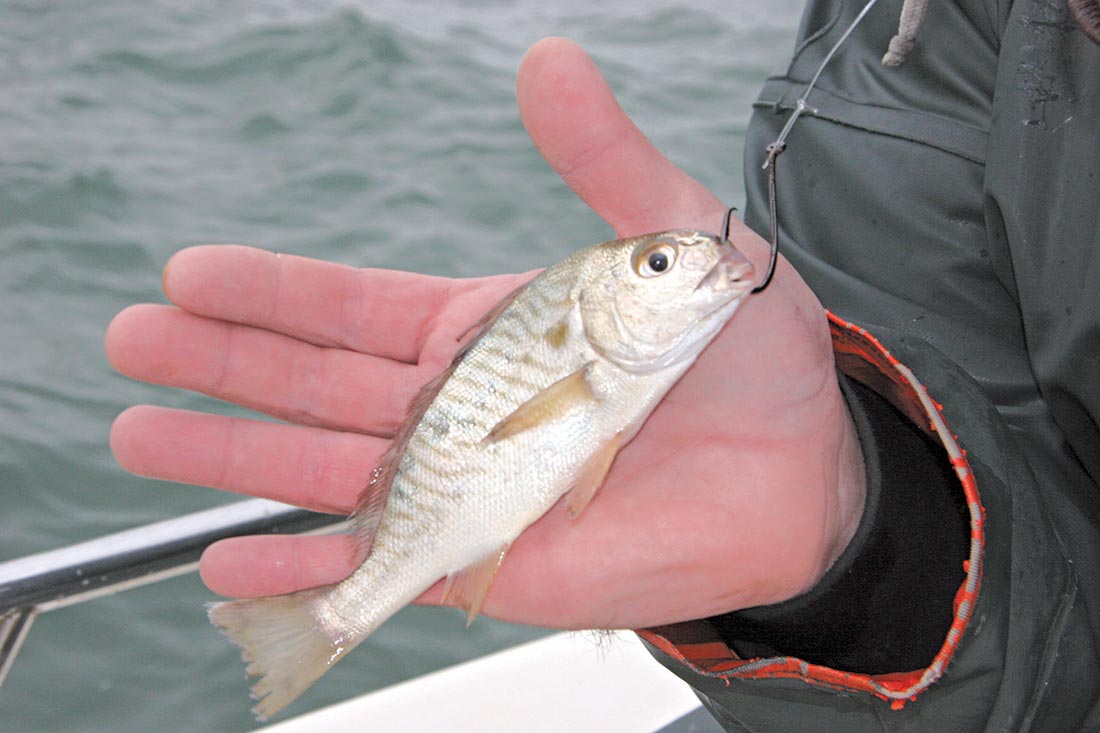By boat or by beach, it’s time to consider modifying your set-up and hookset approach.
With mandatory circle hook usage for targeting striped bass with baits in 2021 coastwide, might as well understand now some tips and tricks to use circle hooks when livelining bunker, fishing with clams, and worms from the boat or beach.
First off, I would recommend using fishfinder slide rigs. The slide allows for the fish to pick up the bait, inhale it and run off without feeling much resistance. Drags must be set with caution to not be locked down but not too loose either. It should have enough resistance to allow the fish to run off a bit, but also enough to dig the barb into the side of the fish’s mouth.
As well, when setting any circle hook, the best method is to pull off to the side, and not straight back as you would when setting a J-hook. The angle to the side allows the hook to plant into the side of the fish’s mouth, whereas a direct snapback hookset will tend to pull the hook straight out of the mouth.

Chunk Baits
As bunker chunk baits can be thick, I like wide gap Octopus type hooks in 9/0 to 10/0 and be sure the barb point is cleanly and clearly pierced through any chunk exposing enough to effectively plant into a fish’s jaw. When a barb has been buried in a chunk, a jarring hook set would usually pierce through the chunk to set, but now, it’s more important than ever to be sure the barb is free to grab the side of the mouth.
Fresh Clam
When setting a hook when using fresh surf clam, get a 45-degree angle on the fish, reel up quickly until the line is taut, and then pull back lightly then with a little extra force once you feel resistance. Circle hooks won’t work if the fish is coming directly at you, so if that is the case, take a few steps to the side and pull against its mouth at a 45-degree angle.
Worm ‘em Up
Ball up the hook to ensure the fish inhales all the bait instead of nipping away at it. Hanging worms will get short bit by bass up to the barb. When worming, I believe the smaller circle hook the better, a size 1/0 to 2/0, to ensure the fish inhales the entire bait and doesn’t feel the small hook buried inside the worm ball. Look for more options in a baitholder variety in the coming months as circle hook manufacturers catch up with the pending coastwide regulations.
Live Eels/Spot
The key to successful eeling or livelining spot or other live baits is to feed a bass for quite a long dropback. Once you feel a takeoff, give it a four to five count before reeling back and setting the hook. Hook eels under the jaw and out the bottom lip or through both lips. Hook spot and other smaller livies behind the dorsal fin or through the lips.
Livelined Bunker
The term snag n’ drop will soon be a thing of the past. Yes, you can still snag bunker with weighted trebles in many regions, but now you must either use a separate rod rigged with a circle hook or simply switch the treble out with a circle using a TA a clip to switch out the snag hook to a circle hook. Hook the bunker the same way via behind the dorsal or through the nose depending on your drift, but allow the fish a sustained runoff before engaging the reel to set the hook.
Start getting used to circle hooks now so you are well prepared once the law goes in effect!




